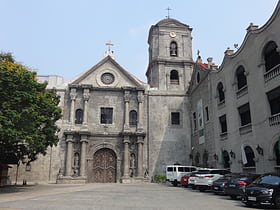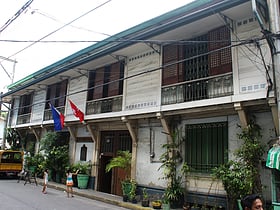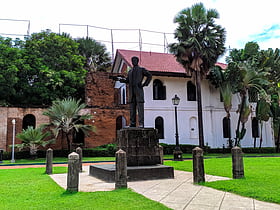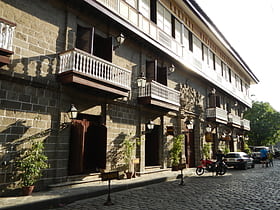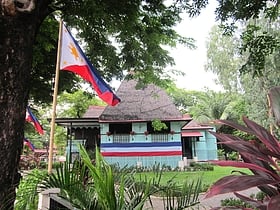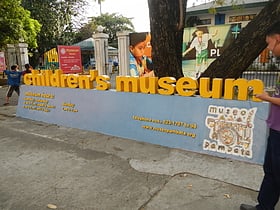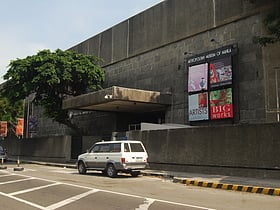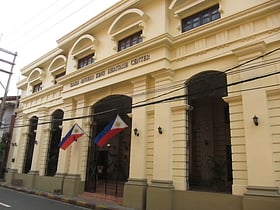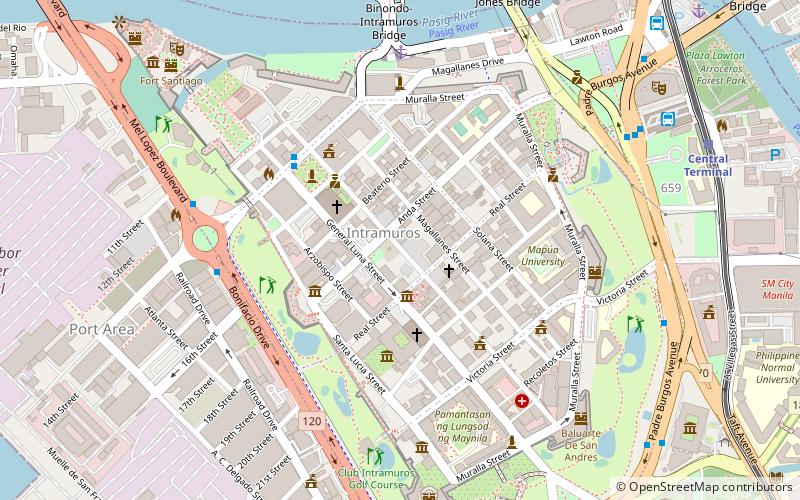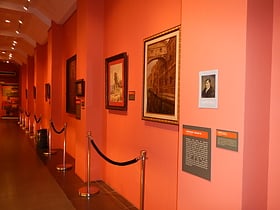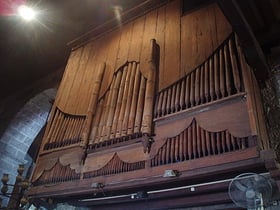Manila: Museum
Places and attractions in the Museum category
Categories
- Church
- Museum
- Park
- Street
- Shopping
- Sacred and religious sites
- Neighbourhood
- History museum
- Historical place
- Shopping centre
- Hispanic colonial architecture
- Universities and schools
- Bridge
- Baroque architecture
- Square
- José Rizal
- Theater
- Art museum
- Area
- Colonial architecture
- Shopping district
- Forts and castles
- Specialty museum
- Skyscraper
- Concerts and shows
- City
- Art Deco architecture
- Sport
- Sport venue
San Agustin Church
Cultural exhibits near a historic church San Agustin Church stands as a bastion of faith and history in the heart of Manila, Philippines. This architectural gem, a prime example of Philippine colonial-era architecture, is the oldest stone church in the country, with construction completed in 1607.
Bahay Nakpil-Bautista
In the bustling district of Quiapo, Manila, lies a historical gem that offers a glimpse into the Philippines' vibrant past: the Bahay Nakpil-Bautista. This well-preserved museum was once a residential home that played a significant role during the Philippine Revolution...
Rizal Shrine
Nestled within the bustling city of Manila, Philippines, the Rizal Shrine stands as a museum dedicated to the life and works of the country's national hero, Dr. José Rizal. This historic site is located in Fort Santiago, Intramuros, the walled city, and serves as a...
Casa Manila
Nestled in the heart of the historic walled city of Intramuros in Manila, Casa Manila stands as a testament to the opulent lifestyle during the Spanish colonial era in the Philippines. This museum is a replica of a 19th-century San Nicolas House that showcases the...
Mabini Shrine
Nestled in the bustling city of Manila, Philippines, the Mabini Shrine stands as a testament to the life and legacy of one of the country's most revered heroes, Apolinario Mabini. Known as the "Sublime Paralytic" and "Brains of the Revolution," Mabini played a pivotal...
National Museum of Anthropology
Nestled in the heart of Manila, the National Museum of Anthropology stands as a testament to the rich cultural tapestry of the Philippines. This esteemed institution is dedicated to preserving the ethnographic, archaeological, and anthropological heritage of the nation.
Historic houses in Santa Ana
Nestled in the heart of Manila, the historic houses of Santa Ana stand as a testament to the rich cultural heritage of the Philippines. These ancestral homes, with their distinct architectural styles, hark back to a bygone era, offering visitors a glimpse into the...
Kalayaan Hall
Kalayaan Hall, nestled in the bustling city of Manila, Philippines, stands as a testament to the country's rich history and cultural heritage. This architectural gem, now serving as a museum, offers a profound glimpse into the Philippines' tumultuous past and its...
Museo Pambata
Nestled in the heart of Manila, the Museo Pambata stands as a beacon of learning and enjoyment for the young and the young at heart. This interactive museum, designed specifically for children, is a space where education and play converge, offering a unique...
Metropolitan Museum of Manila
The Metropolitan Museum of Manila, fondly referred to as the Met, stands as a cultural stronghold in the heart of the Philippines' bustling capital city. Established in 1976, the museum is a beacon of art and history, dedicated to collecting, studying, and presenting...
National Museum of Fine Arts
The National Museum of Fine Arts, formerly known as the National Art Gallery, is an art museum in Manila, Philippines. It is located on Padre Burgos Avenue across from the National Museum of Anthropology in the eastern side of Rizal Park.
National Museum of Natural History
The National Museum of Natural History is the national natural history museum of the Philippines. It is located along Agrifina Circle in Rizal Park, Manila.
Bahay Tsinoy
The Bahay Tsinoy is a building in Intramuros, Manila, Philippines which houses the Kaisa-Angelo King Heritage Center, a museum documents the history, lives and contributions of the ethnic Chinese in the Philippine life and history.
Intramuros
Museo de Intramuros is an ecclesiastical museum operated and managed by the Intramuros Administration. It is located at the reconstructed San Ignacio Church and Convent within the historic walled area of Intramuros in Manila, Philippines.
Rizal Memorial Sports Complex
The Rizal Memorial Sports Complex is a national sports complex of the Philippines, located on Pablo Ocampo St. Malate, Manila. It is named in honor of the country's national hero, José Rizal.
National Planetarium
The National Planetarium, also known as the National Museum Planetarium, was a planetarium owned and operated by the National Museum of the Philippines in Manila.
National Museum of the Philippines
The National Museum of the Philippines is an umbrella government organization that oversees a number of national museums in the Philippines including ethnographic, anthropological, archaeological and visual arts collections.
UST Museum of Arts and Sciences
The University of Santo Tomas Museum of Arts and Sciences is the oldest existing museum in the Philippines. It started as a Gabinete de Fisica, or observation room, of mineral, botanical and biological collections in the 17th century.
UP Manila - Museum Of A History Of Ideas
The University of the Philippines Manila Museum of a History of Ideas is a university museum located in Ermita, Manila, Philippines.
Elks Club Building
The Elks Club Building is the second and former clubhouse of the Manila Elks Lodge #761—Manila Lodge 761, better known as the Manila Elks Club, in Manila, the Philippines. It was designed by William E. Parsons.
Bamboo Organ
The Las Piñas Bamboo Organ in St. Joseph Parish Church in Las Piñas, Philippines, is a 19th-century church organ. It is known for its unique organ pipes; of its 1031 pipes, 902 are made of bamboo.
Iglesia ni Cristo Museum
The Iglesia ni Cristo Museum is a museum in Punta, Santa Ana, Manila. The building of the museum was originally used as a place of worship and is the first local congregation of the Iglesia ni Cristo and is now used as a museum by the church. It is the location where founder Felix Manalo first preached about the Iglesia in 1914.
Map

